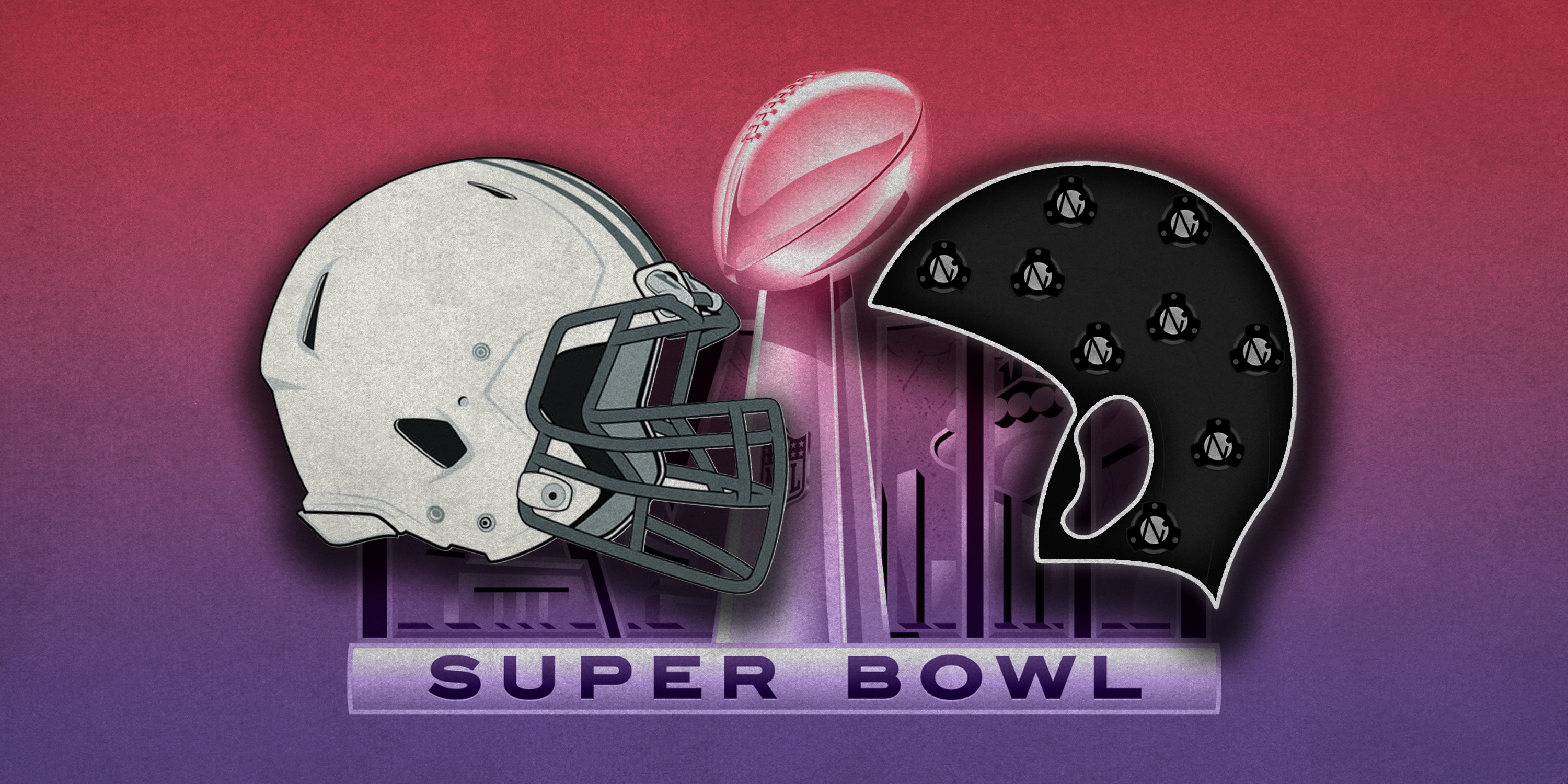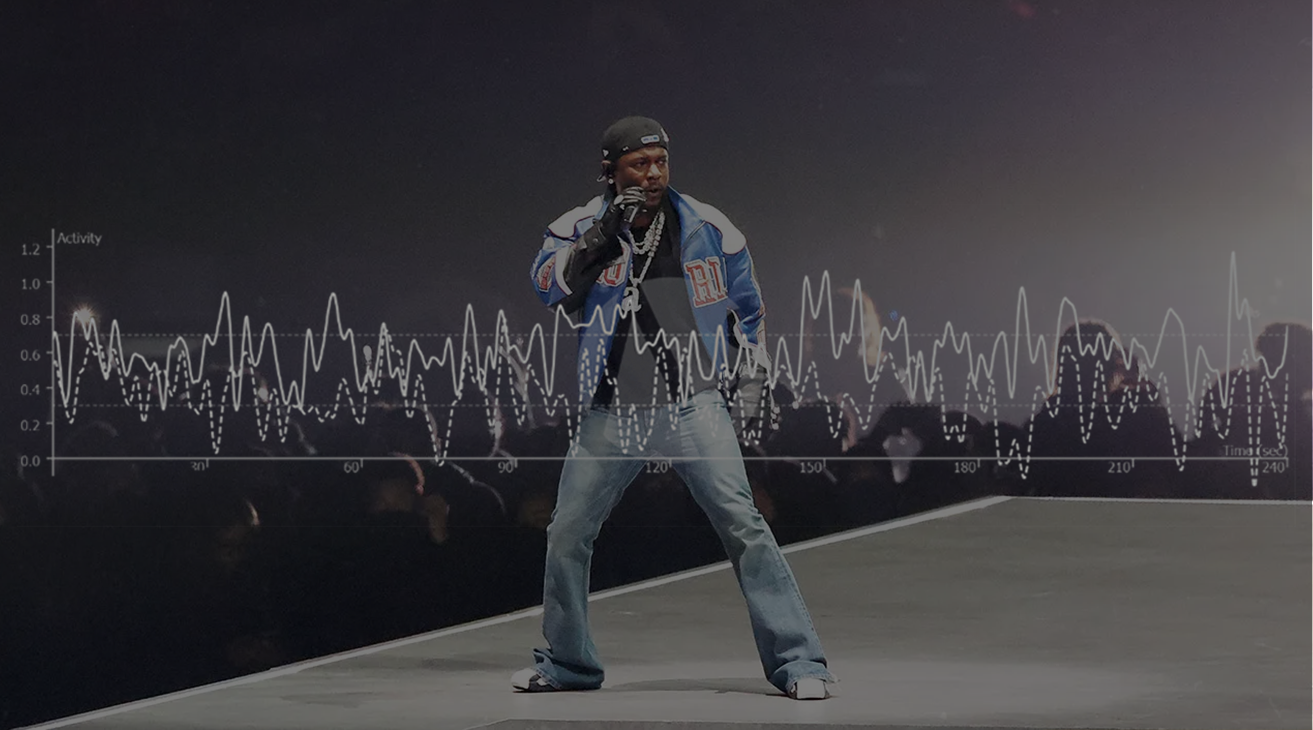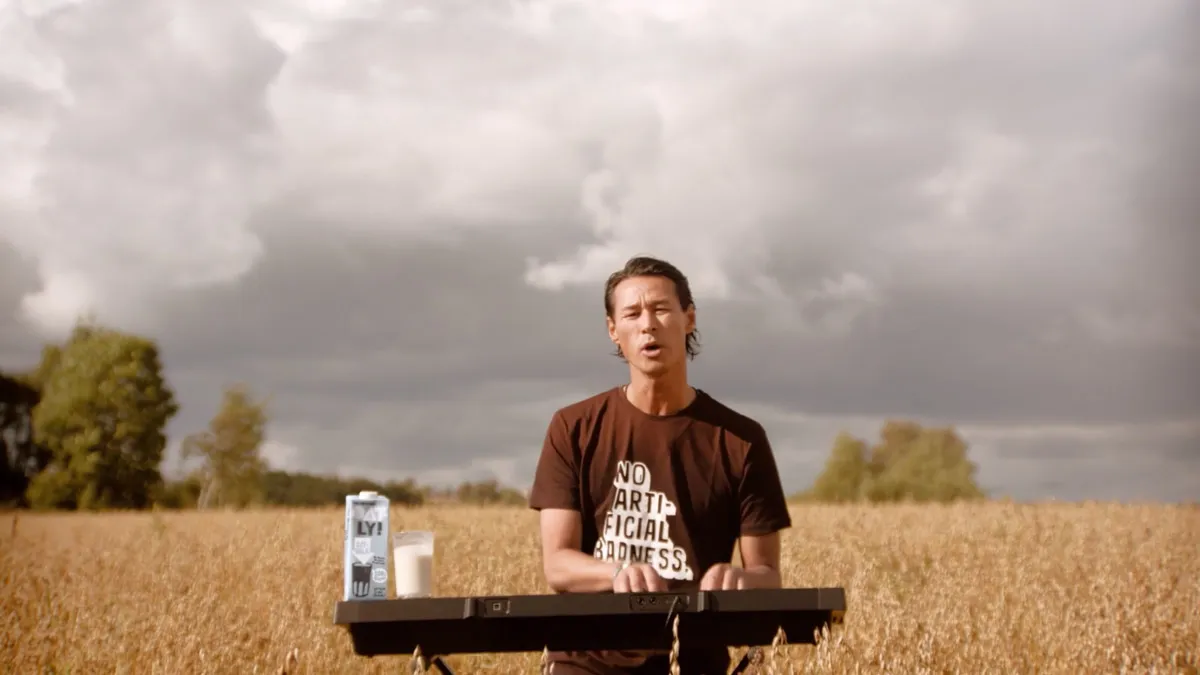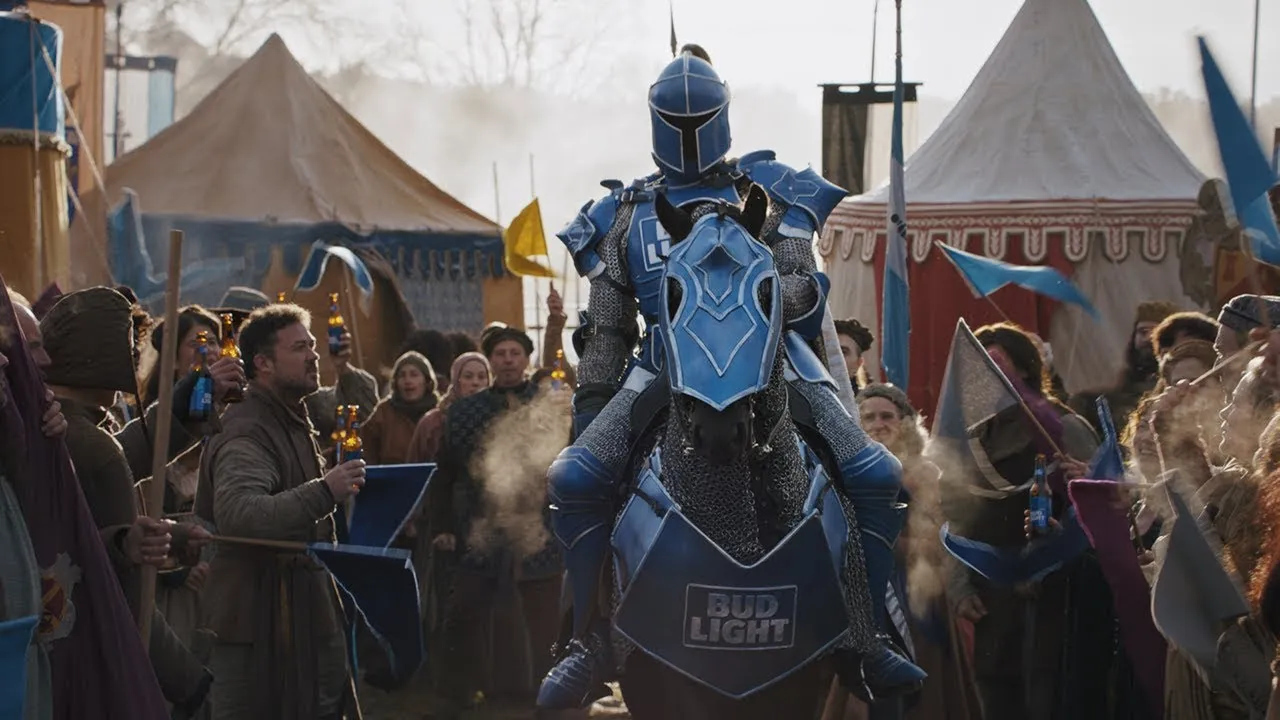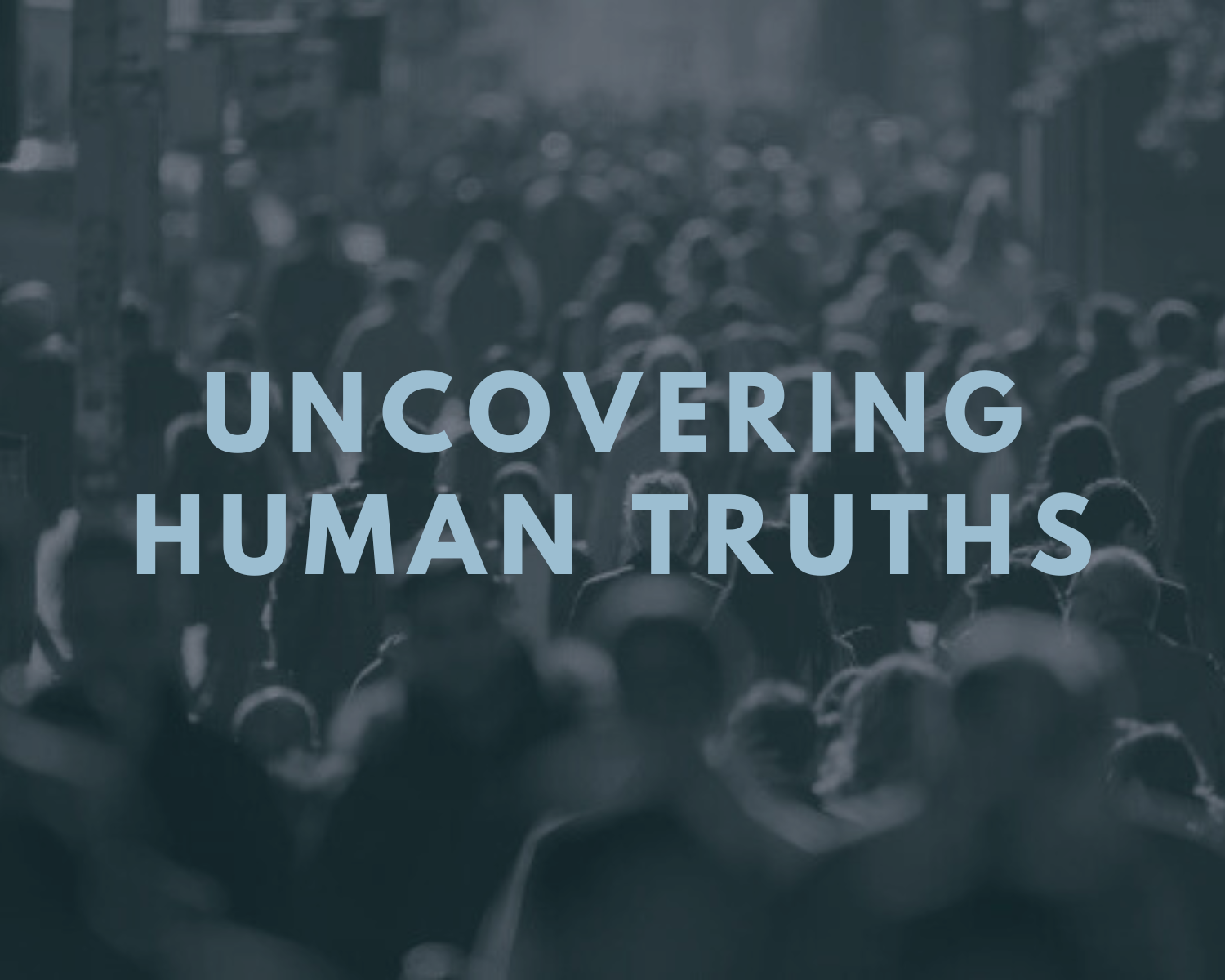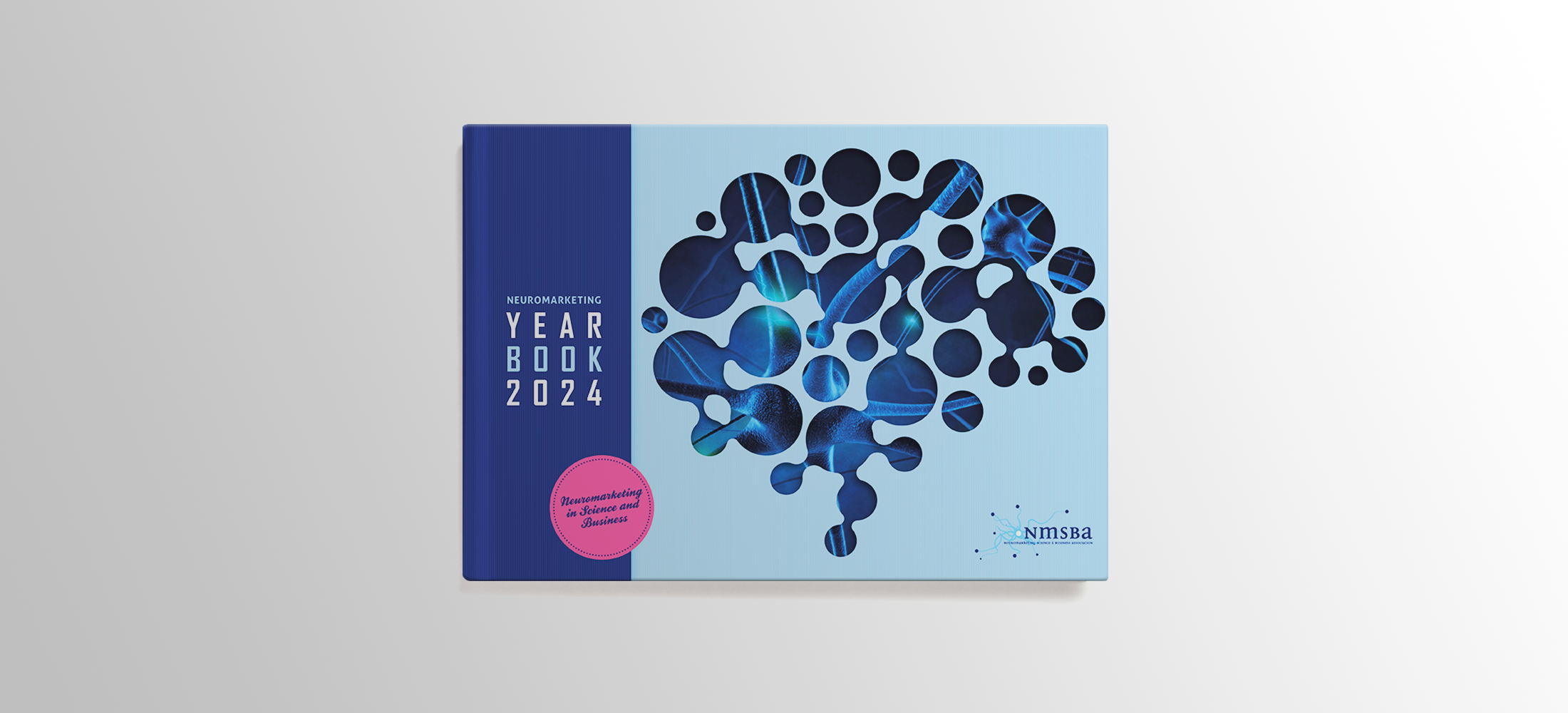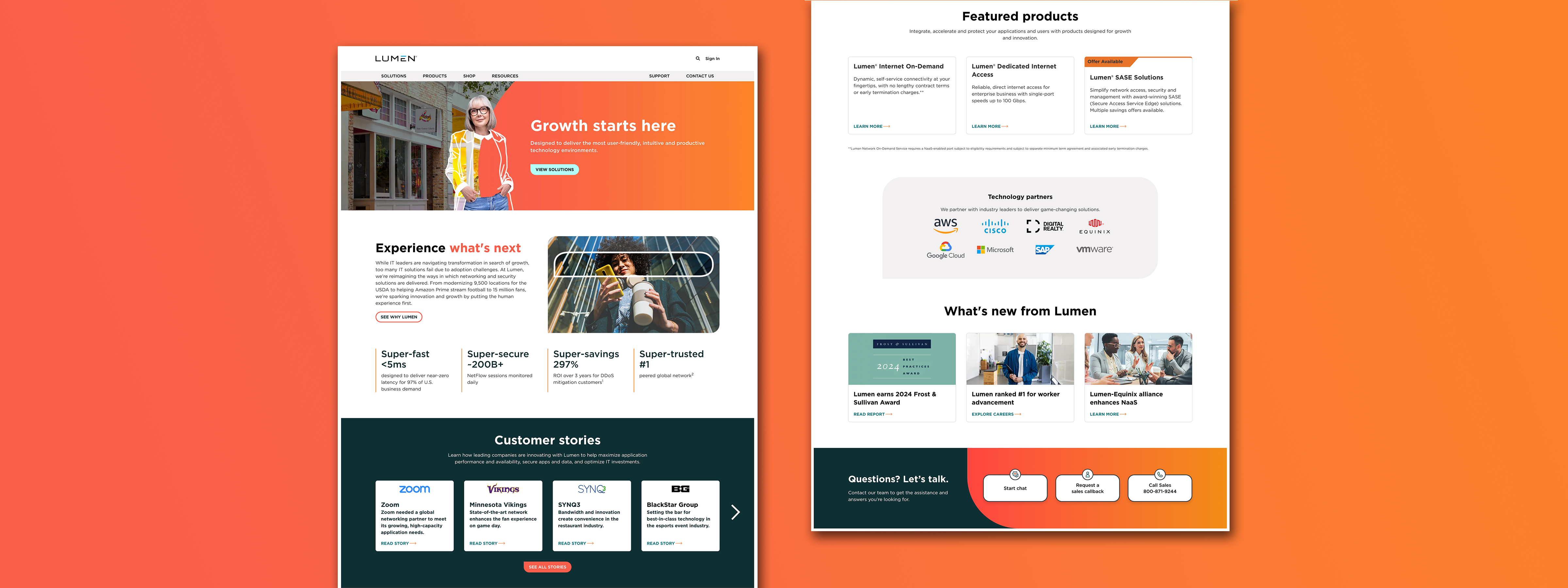The Super Bowl. A cultural juggernaut and a marketing battleground. Amidst the million-dollar commercials and celebrity cameos during what is undoubtedly the industry’s biggest day of the year, many ads fail to truly resonate – leaving millions watching, but few moved. While it only happens once a year, this is an unprecedented opportunity to tap into collective emotions, build narratives that linger, and forge lasting connections. So, what separates the touchdowns from the fumbles in this high-stakes advertising game?
Neuro-Insight has been in the middle of this industry affair for well-over a decade. We have been asked to lead creative seminars, produce neuro-analyses, and have spent hundreds of hours decoding individual ad nuances as brands get ready to release what is a culmination of their best attempt at both creativity and individuality. Every year, a lot of the Super Bowl advertising has been touched by Neuro-Insight before the big day (in some years up to 20% of all Ads went through Neuro-Insight). Throughout these experiences we’ve learned a few things, and like most wisdom, here are a few obvious things where we see many brands falter:
1. Spirit over form.
The rules of advertising and marketing don’t change just because it is the Super Bowl – they just get accentuated. The stakes are higher – but what was once the greatest opportunity to showcase creativity, is sometimes relegated to a flex for marketers. An opportunity to be innovative – where you see people resorting to a formula. Many times, we see a scramble of brands to secure that year’s biggest influencers and celebrities, counting on their presence alone to be enough to generate buzz and therefore clicks and sales; forgetting the most important aspect of any creative: telling a story that appeals to a truth, conscious or subconscious, with a premise and a resolution that continues to engage people. That’s where a good creative would end, but an Ad has the additional burden of making sure the brand/key message/product information is encoded into memory – if that doesn’t happen you’ve just created entertainment.
Fun fact: In our database of thousands of neuro-tested ads, those with celebrities perform worse for the brand on average compared to ads without celebrities. They do create a higher emotional intensity (15% higher), but the memory creation is limited to the scenes about the celebrities themselves. So brands pay celebs to advertise themselves – we’d like to take that deal!
2. Read the room.
Stories are not delivered in isolation, so why should they be written as such? Heck, COVID made public a piece of information that only the most astute readers of the game knew – that the people person looks for different kind of content on TV versus the theater, and that same person looks for different kind of content when they’re alone versus watching with someone else. Why? Because we process information with a different lens by ourselves than with people. What’s funny in a group is not funny alone (unless you’re on something). What’s dark in a group seems perfectly fine when watching alone.
The context for how the game is consumed is set: highly anticipated, loud, with friends. What can we do with that information? A lot. For starters, you can’t rely on auditory nuances that you otherwise have access to. The reason why having celebrities has been popular is because it is the fastest way to grab eyeballs. Great, but what are you going to do after that? Having someone look is not enough – the eyes can send the signal to the brain, but if the brain doesn’t believe it’s worth committing memory, there goes your $7m media buy. Lastly, and most importantly – the stories need to focus on emotions we can feel collectively with a group. More on that when you pay us some money to learn more.
3. Cut out the one-hit-wonders.
Ok, now you know you can’t leave the basics of marketing behind, and you have a few added constraints. So far this seems worse, where is the opportunity?
Well, who said your story is a movie? It’s a web series where each episode brings its own delight, and the finale is the delectable feast of twists and turns and resolutions (maybe even a new plot). If you can create a story that people can engage with over time, you are creating more than a “one-hit-wonder.” You are creating conversation, anticipation, and perpetual brand awareness. Consider creating a longer-term plan to deliver a well-orchestrated series, each ad building on the previous one, culminating in a memorable finale. Remember M&M’s Super Bowl saga featuring Danny DeVito? Each ad was a chapter, leaving viewers eagerly awaiting the next installment.
Now that you’re all experts, let us look at a few ads from this year, first philosophically and then with a neuro lens. How do viewers react subconsciously? How do our hypotheses stack up against hard science?
But first – the rules. How does our analysis work? At Neuro-Insight, we look to the subconscious to see how effectively brands communicate their messaging and demonstrate their creative prowess. Our patented technology, Steady State Topography (SST), allows us to measure second-by-second brain responses that breach consciousness and get to the root of human emotion and decision-making.
Our proprietary technology allows us to understand exactly what moments of creatives are encoded into the long-term memory of consumers. As we do this, we also look to the brain to tell us why a particular moment or message is being stored. For this, we leverage key diagnostic metrics including approach and withdrawal, emotional intensity, and engagement (personal relevance).
Duolingo’s Super Bowl Debut: Butts or
Budgets?
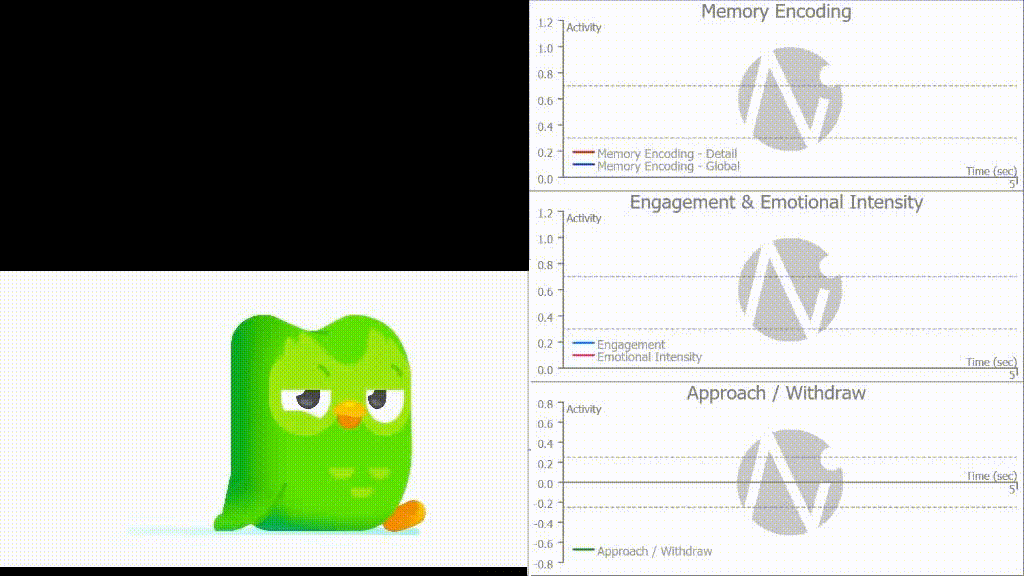
Manu Orssaud, CMO of Duolingo, once noted, “Big budgets can flatten creative ideas.” It’s because of this logic that the brand opted for a 5-second spot during the big game. The challenge then became, how can Duolingo make a creative masterpiece and a lasting impact in such little time?
Our Take:
In recent years, Duolingo has worked to bolster its distinctive visual identity and spirited online persona (often utilizing their iconic mascot, Duo). When it came to the Super Bowl, it was the brand’s mission to maintain distinctiveness in both theme and execution.
Their marketing stunts pre-game generated just the right amount of buzz. Before the release of the main ad, the brand launched a social media campaign featuring Duo alongside internet sensation and plastic surgeon, Dr. Miami. Viewers became increasingly speculative about Duo’s cosmetic journey, left wondering what may have prompted his butt-lift. Once the ad was released, 4 million Duolingo members got a timely in-app notification ringing in their message: “Do your lesson, no butts.” Though these stunts appear to be immediate hits, the question remains: Did the ad itself leave a lasting impact? Well, let’s look at the data.
Decoding the Neuro-Data:
Spirit over form: does the ad tell an impactful story that drives memorability for the brand?
- Observationally:
- Unlike most Super Bowl campaigns, the goal of this ad was not to tell a drawn out, meaningful story – but rather, to create brand engagement in a humorous and attention-grabbing way (fast!).
- Neuro Evaluation:
- Throughout the 5-second spot, detail memory encoding remained high (nearing the 0.7 benchmark). The key to this creative, however, was the peak in detail memory at end branding. This suggests that viewers encoded Duolingo and their message, “do you Duolingo.”
Read the room: does the ad focus take the context into account? Physically, we are referring to the noisy, crowded viewer environment. Implicitly, we are referencing the social, political environment – and the context of the Super Bowl.
- Observationally:
- The loud, crowded, and overstimulating environment that most people watch the SB in, is a hard one to break through. This is why Duo’s strategy was genius — relying only on visual cues and one long sound (a fart), ending with a branding moment. It was both simple and silly enough to turn heads.
- Neuro Evaluation:
- Emotional intensity ranked in the 96th percentile, consistently surpassing our effectiveness benchmark for over 90% of the advertisement’s duration. Approach reached the 100th percentile, suggesting that audiences were leaning-in the entire time.
- Together, these metrics show the neuro-signature of an advertisement that epitomizes highly appealing creativity.
Cut out the one-hit-wonders: does the brand engage audiences in this story over a period of time, not just in this SB ad break?
- Observationally:
- Duolingo has gained significant recognition among Gen Z for their exceptionally culturally aware, humorous, and unconventional social media personality. Given their established presence in this domain, leveraging their iconic mascot in their pre-game approach left Duo’s fans anticipating the reveal during the big game.
- Neuro Evaluation:
- Exceptionally high levels of emotion and approach effectively drive memory encoding (particularly at end branding), ultimately solidifying this ad as a success. The memorable ad, in conjunction with the pre/post-marketing campaign, means that it was certainly more than a one-hit-wonder.
Ultimately, Duolingo was successfully able to create an ad that drove memorability for the brand by creating high levels of emotional intensity and approach. So, while big budgets can certainly make a splash, sometimes it’s the ingenuity born from smaller investments (though still mighty), time constraints, and sheer creativity that can make all the difference.
All Hail the DunKings
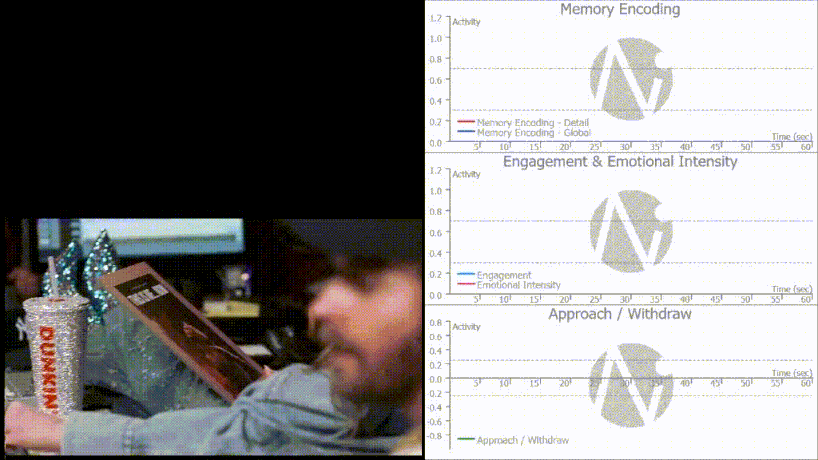
Dunkin’s 2024 Super Bowl campaign was a massive hit. It caused such a buzz that Dunkin’s website nearly crashed, with the iconic DunKing tracksuits selling out in just 19 minutes! And even though Ad Meter ratings do not correlate to sales, they do correlate to general likeability – this Ad ranked 2nd on the US Ad Meter. While it boosted brand awareness and spiked short-term sales, the real question is: Will it drive long-term impact for the brand?
Our Take:
In addition to the pre-game buildup, Dunkin went all-in with their post-game approach, dropping “Don’t Dunk Away at My Heart,” the catchy song performed by the Boston-based celebrity boy band. In addition to the release of the tracksuits and bucket hats, Dunkin released a limited-edition DunKings menu, featuring new coffee inspired by Ben Affleck’s favorite order. Was the ad as impactful as these marketing stunts? Our answer is yes. Let’s delve into the data to see if our hypothesis holds up.
Decoding the Neuro-Data:
Spirit over form: does the ad tell an impactful story over being a celebrity gimmick?
- Observationally:
- This ad wasn’t just a celebrity flex…the Boston connection, the J Lo <> Ben Afleck, Ben Afleck <> Matt Damon dynamic with Tom Brady thrown into the mix was a clever, on–brand strategy.
- Neuro Evaluation:
- The narrative was memorable, registering 12 peaks in global memory (our measure for narrative connection) within the 60-second spot. This indicates sustained retention and interest in the story throughout its duration.
- Despite the neuro-signature showing few peaks in detail memory encoding, Dunkin’s practice of heavily branding the entire creative meant that any peak was successfully encoded into long-term memory.
- Additionally, the huge spike in detail memory encoding at end branding (close to the 80th percentile) shows that not only did the audience remember the amusing narrative, but it was also successfully linked to Dunkin.
Read the room: does the ad take into account the noisy, crowded viewer environment?
- Observationally:
- Even though this Ad is centered around the Boy Band, the story doesn’t focus on the auditory nuances (which is great), and instead the comedy could be experienced fully without being able to hear anything at all – you knew what each character was saying even without hearing them – a masterstroke in the SB environment.
- Neuro Evaluation:
- Dunkin leverages comedy and iconic personalities in this ad, effective tools for tapping into the collective emotions of a group. Our neuro data supports this observation, showing that our emotional intensity metric sits above the effectiveness benchmark for over 60% of the ad.
- The high level of emotion (in the 88th percentile) in combination with frequent (and high) peaks in approach shows that the ad is extremely likeable and therefore drives memory, as well as buzz, for the campaign.
Cut out the one-hit-wonders: does the brand engage audiences in this story over a period of time, not just in this SB ad break?
- Observationally:
- Between staged paparazzi shoots, teasers aired at the Grammy’s, and a new customized menu, Dunkin’s multi-pronged marketing–strategy, created plenty of discourse and anticipation and was anything but a one-hit-wonder.
- Neuro Evaluation:
- Once again, we see that levels of engagement are low throughout this creative, ranking only in the 12th percentile (likely due to the fact that being in a celebrity boy band and auditioning for JLo is not personally relevant for many of us). However, the cohesive narrative the brand has been pushing for years proved enough to drive high levels of memory encoding throughout this ad, the key to in-market success.
In summary, our neuro-analysis demonstrates that Dunkin’s Super Bowl campaign was a definite win, marked by elevated levels of memory encoding and emotional intensity. So, is America still running on Dunkin after the release of this campaign? We certainly believe so.
CeraVe and Michael Cera
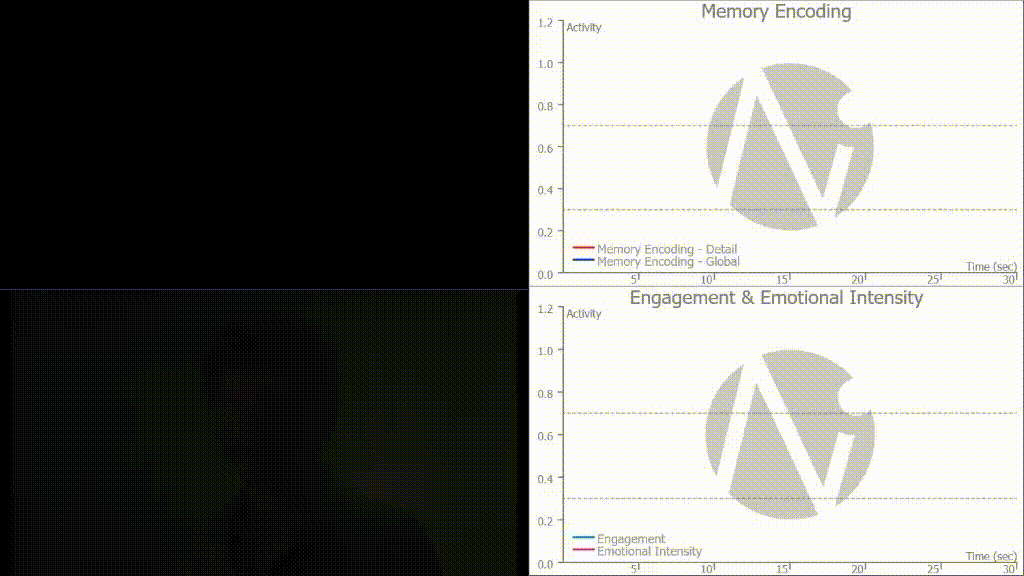
CeraVe’s Super Bowl commercial may have ranked 15th on the USA Today Ad Meter, but it secured the top spot in AdWeek and Forbes. How could there be such a discrepancy? Well, survey data can only tell us so much. Ranking best and worst takes more than conscious responses, it requires a deep understanding of the audience, the industry, and most importantly, the collective consumer subconscious.
Our Take:
CeraVe’s pre-game influencer campaign was the star of the show and garnered a staggering 6 billion impressions, “changing the game” (so to speak) for marketing campaigns in the future. While the buzz and anticipation appealed to Gen Z-ers, the ad itself seemed secondary and less interesting by comparison.
Decoding the Neuro-Data:
Spirit over form: does the ad tell an impactful story that drives memorability for the brand?
- Observationally:
- CeraVe effectively told a funny story that continuously featured their product and acted as the perfect finale to the multifaceted campaign – a satisfying full-circle conclusion.
- Neuro Evaluation:
- The overall story is engaging enough for global memory (our measure for narrative connection) to peak every 4-5 seconds. This suggests that CeraVe never loses their audience, arguably one of the most important factors in creating a good ad.
- This perpetual interest causes 3 of the 5 major branding moments to be encoded into long-term-memory, the key driver for future in-market behavior.
Read the room: does the ad focus take the context into account? Physically, we are referring to the noisy, crowded viewer environment. Implicitly, we are referencing the social, political environment – and the context of the Super Bowl.
- Observationally:
- CeraVe uses dry humor and comedic storytelling in this ad, tools that work well when appealing to the collective emotions of a group.
- Neuro Evaluation:
- Our neuro data corroborates this: emotional intensity is high throughout the creative, in the 80th percentile of our entire TVC database.
Cut-out the one-hit-wonders: does the brand engage audiences in this story over a period of time? Or only in this SB ad break?
- Observationally:
- The strategy of perpetual utilization of influencer marketing leading up to the game was an effective strategy in creating buzz and anticipation surrounding the campaign.
- Neuro Evaluation:
- Despite low levels of engagement (lack of personal relevance) – ranking in the 12th percentile – the memory breakthrough and continued narrative allowed the ad to flourish in this competitive, chaotic environment.

